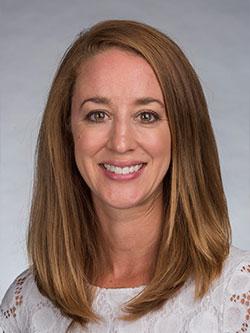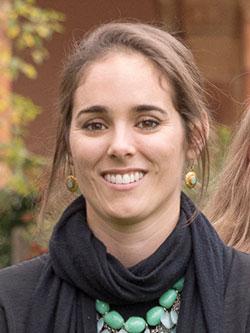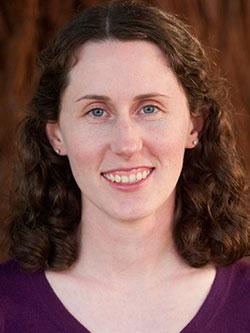15: Bioarchaeology and Forensic Anthropology
- Last updated
- Save as PDF
- Page ID
- 66719
Ashley Kendell, Ph.D., D-ABMDI, California State University, Chico
Alex Perrone, M.A., California State University, Chico
Colleen Milligan, Ph.D., California State University, Chico
Learning Objectives
- Define and differentiate bioarchaeology and forensic anthropology as subfields of biological anthropology.
- Describe the seven steps carried out during skeletal analysis.
- Outline the four major components of the biological profile.
- Contrast the four categories of trauma.
- Explain how to identify the different taphonomic agents that alter bone.
- Discuss ethical considerations for both bioarchaeology and forensic anthropology.
Bioarchaeology and forensic anthropology are both subfields of biological anthropology. While the goals of each subfield are different, each relies on skeletal analysis to gain information about humans, both past and present. This chapter will provide a general overview of the analysis of human skeletal remains, as it applies to both bioarchaeology and forensic anthropology.
About the Authors
Ashley Kendell
California State University, Chico, akendell@csuchico.edu

Dr. Ashley Kendell is currently an assistant professor and forensic anthropologist at Chico State. Prior to beginning her position at Chico State, she was a visiting professor at the University of Montana and the forensic anthropologist for the state of Montana. Dr. Kendell obtained her doctorate from Michigan State University, and her research interests include skeletal trauma analysis and digitization and curation methods for digital osteological data. She is also a Registry Diplomate of the American Board of Medicolegal Death Investigators. Throughout her doctoral program, she worked as a medicolegal death investigator for the greater Lansing, Michigan, area and was involved in the investigation of over 200 forensic cases.
Alex Perrone
California State University, Chico, aperrone1@mail.csuchico.edu

Alex Perrone is a lecturer in anthropology and biological sciences at California State University, Chico, and a lecturer in anthropology at Butte Community College. She is also the Supervisor of the Human Identification Laboratory in the Department of Anthropology at California State University, Chico. Her research interests include bioarchaeology, paleopathology, forensic anthropology, skeletal biology, California prehistory, and public health. She has worked on bioarchaeological and archaeological projects in Antigua, California, Hawaii, Greece, and the UK, and was an archaeological technician for the USDA Forest Service. She assists with training courses for local and federal law enforcement agencies and assists law enforcement agencies with the recovery and analysis of human remains.
Colleen Milligan
California State University, Chico, cfmilligan@csuchico.edu

Dr. Colleen Milligan is a physical anthropologist with research interests in bioarchaeology, skeletal biology, and forensic anthropology. She has been a Fellow with the Department of Homeland Security and has assisted in forensic anthropology casework and recoveries in the State of Michigan and California. She has also assisted in community outreach programs in forensic anthropology and forensic science, as well as recovery training courses for local, state, and federal law enforcement officers. She is a certified instructor through Peace Officers Standards and Training (POST). Dr. Milligan serves as the current co-director of the Chico State Human Identification Laboratory.
References
Adams, Bradley J., and Lyle W. Konigsberg, eds. 2008. Recovery, Analysis, and Identification of Commingled Remains. Totowa, NJ: Humana Press.
Berg, Gregory E. 2017. “Sex Estimation of Unknown Human Skeletal Remains.” In Forensic Anthropology: A Comprehensive Introduction, Second edition, edited by Natalie R. Langley and MariaTeresa A. Tersigni-Tarrant, 143–159. Boca Raton, FL: CRC Press.
Brooks, S., and J. M. Suchey. 1990. “Skeletal Age Determination Based on the Os Pubis: A Comparison of the Acsádi-Nemeskéri and Suchey-Brooks Methods.” Human Evolution 5 (3): 227–238.
Cunningham, Craig, Louise Scheuer, and Sue Black. 2016. Developmental Juvenile Osteology, Second edition. London: Elsevier Academic Press.
Galloway, Alison. Broken Bones: Anthropological Analysis of Blunt Force Trauma. 1999. Springfield, IL: Charles C. THomas Publisher, LTD.
Hefner, Joseph T., and Kandus C. Linde. 2018. Atlas of Human Cranial MacromorphoscopicTraits. San Diego: Academic Press.
Hopkinson, Kimberly A., Sarah M. Yeats, and G. Richard Scott. 2008. “For Whom the Coin Tolls: Green Stained Teeth and Jaws in Medieval and Post-Medieval Spanish Burials.” Dental Anthropology 21 (1): 12–17.
Katz, Darryl, and Judy Myers Suchey. 1986. “Age Determination of the Male Os Pubis.” American Journal of Physical Anthropology 69 (4): 427–435.
Langley, Natalie R., Alice F. Gooding, and MariaTeresa Tersigni-Tarrant. 2017. “Age Estimation Methods.” In Forensic Anthropology: A Comprehensive Introduction, Second edition, edited by Natalie R. Langley and MariaTeresa A. Tersigni-Tarrant, 175–191. Boca Raton, FL: CRC Press.
Lovell, Nancy C. 1997. “Trauma Analysis in Paleopathology.” Yearbook of Physical Anthropology 104 (S25): 139–170.
İşcan, M. Y., S. R. Loth, and R. K. Wright. 1984. “Age Estimation from the Rib by Phase Analysis: White Males.” Journal of Forensic Sciences 29 (4): 1094–1104.
———. 1985. “Age Estimation from the Rib by Phase Analysis: White Females.” Journal of Forensic Sciences 30 (3): 853–863.
Native American Graves Protection and Repatriation Act (NAGPRA) 1990 (25 U.S. Code 3001 et seq.)
Nelson’s Caribbean Hell-hole: An Eighteenth-Century Navy Graveyard Uncovered. 2013. BBC Documentary. https://www.bbc.co.uk/programmes/p0187q6r.
NIH U.S. National Library of Medicine. 2019. “Genetics Home Reference: Achondroplasia.” Last modified February 5, 2019. https://ghr.nlm.nih.gov/condition/achondroplasia.
NIH. Genetic and Rare Diseases Information Center. Last modified October 13, 2017. https://rarediseases.info.nih.gov
NIST (National Institute of Standards and Technology). N.d. “The Organization of Scientific Area Committees for Forensic Science.” https://www.nist.gov/topics/organiza...rensic-science.
Ortner, Donald J., and Walter G. J. Putschar. 1981. Identification of Pathological Conditions in Human Skeletal Remains. Washington, D.C.: Smithsonian Institution Press.
Ousley, Stephen. 1995. “Should We Estimate Biological or Forensic Stature?” Journal of Forensic Sciences. 40, no. 5: 768–773.
Phenice, T. W. 1969. “A Newly Developed Visual Method of Sexing the Os Pubis.” American Journal of Physical Anthropology 30 (2): 297–302.
Rose, Jerome C., Thomas J. Green, and Victoria D. Green. 1996. “NAGPRA Is Forever: Osteology and the Repatriation of Skeletons.” Annual Review of Anthropology 25: 81–103.
Schaefer, Maureen, Sue Black, and Louise Scheuer. Juvenile Osteology: A Laboratory and Field Manual. 2009. San Diego: Elsevier Academic Press.
Scientific Working Group for Forensic Anthropology (SWGANTH). 2010a. “Personal Identification.” Last modified June 3, 2010. www.nist.gov/sites/default/files/documents/2018/03/13/swganth_personal_identification.pdf.
Scientific Working Group for Forensic Anthropology (SWGANTH). 2010b. “Sex Assessment.” Last modified June 3, 2010. www.nist.gov/sites/default/files/documents/2018/03/13/swganth_sex_assessment.pdf.
Scientific Working Group for Forensic Anthropology (SWGANTH). 2011. “Trauma Analysis.” Last modified May 27, 2011. www.nist.gov/sites/default/files/documents/2018/03/13/swganth_trauma.pdf.
Scientific Working Group for Forensic Anthropology (SWGANTH). 2012. “Stature Estimation.” Last modified August 2, 2012. www.nist.gov/sites/default/files/documents/2018/03/13/swganth_stature_estimation.pdf.
Scientific Working Group for Forensic Anthropology (SWGANTH). 2013. “Age Estimation.” Last modified January 22, 2013. www.nist.gov/sites/default/files/documents/2018/03/13/swganth_age_estimation.pdf.
Tersigni-Tarrant, MariaTeresa A., and Natalie R. Langley. 2017. “Human Osteology.” In Forensic Anthropology: A Comprehensive Introduction, Second edition, edited by Natalie R. Langley and MariaTeresa A. Tersigni-Tarrant, 81–109. Boca Raton, FL: CRC Press.
Ubelaker, Douglas H. 2018. “A History of Forensic Anthropology.” Special issue: Centennial Anniversary Issue of AJPA, American Journal of Physical Anthropology 165 (4): 915–923.
White, Tim D., and Pieter A. Folkens. 2005. The Human Bone Manual. Burlington, MA: Elsevier Academic Press.
Figure Attributions
Figure 15.1 Example of burned sheetrock by Alex Perrone original to Explorations: An Open Invitation to Biological Anthropology is under a CC BY-NC 4.0 License.
Figure 15.2 Cross section of human long bone original to Explorations: An Open Invitation to Biological Anthropology by Mary Nelson is under a CC BY-NC 4.0 License.
Figure 15.3 Anatomy of a Flat Bone (Anatomy & Physiology, Figure 6.3.3 byOpenStax is used under aCC BY 4.0 License.
Figure 15.4 Bone (248 12) Bone cross section by Doc. RNDr. Josef Reischig, CSc. is used under a CC BY-SA 3.0 License.
Figure 15.5 Example of PVC pipe by Alex Perrone original to Explorations: An Open Invitation to Biological Anthropology is under a CC BY-NC 4.0 License.
Figure 15.6 Animal bone cross section by Alex Perrone original to Explorations: An Open Invitation to Biological Anthropology is under a CC BY-NC 4.0 License.
Figure 15.7 Tib fib growth plates by Gilo1969 at English Wikipedia is used under a CC BY 3.0 License.
Figure 15.8 Filling by Kauzio has been designated to the public domain (CC0).
Figure 15.9 Spanish Civil War – Mass grave – Estépar, Burgos by Mario Modesto Mata is used under a CC BY-SA 4.0 License.
Figure 15.10 Anterior and lateral view of a male and female cranium by Ashley Kendell a derivative work original to Explorations: An Open Invitation to Biological Anthropology is under a CC BY-NC 4.0 License. [Includes Human Female Asian Skull and Human Male Asian Skull by ©BoneClones used by permission.]
Figure 15.11 Features associated with the Phenice Method by Colleen Milligan original to Explorations: An Open Invitation to Biological Anthropology is under a CC BY-NC 4.0 License.
Figure 15.12 Skeletal traits commonly used in a morphological assessment of ancestry by Colleen Milligan original to Explorations: An Open Invitation to Biological Anthropology is under a CC BY-NC 4.0 License.
Figure 15.13 5-year-old Human Child Skull with Mixed Dentition Exposed by ©BoneClones is used by permission and available here is under a CC BY-NC 4.0 License.
Figure 15.14 Example of the progression of degenerative changes to the pubic symphysis a derived work by Ashley Kendell original to Explorations: An Open Invitation to Biological Anthropology is under a CC BY-NC 4.0 License. [Original photos by Dr. Julie Fleischman used by permission.]
Figure 15.15 Examples of degenerative changes to the sternal rib end by Alex Perrone original to Explorations: An Open Invitation to Biological Anthropology is under a CC BY-NC 4.0 License.
Figure 15.16 Measurement of the bicondylar length of the femur by Alex Perrone original to Explorations: An Open Invitation to Biological Anthropology is under a CC BY-NC 4.0 License.
Figure 15.17 Frontal bone sinuses by Alex Khimich is used under a CC BY-SA 4.0 License.
Figure 15.18 Shoulder replacement by Smithsonian [exhibit: Written in Bone, Today’s Bones] has no known copyright restrictions.
Figure 15.19 Skull sword trauma by the National Institutes of Health, Health & Human Services [19th Century Collection, National Museum of Health and Medicine, Armed Forces Institute of Pathology, Washington, D.C. From exhibition “Visible Proofs: Forensic Views of the Body” U.S. National Library of Medicine] is in the public domain.
Figure 15.20 Skull hammer trauma by the National Institutes of Health, Health & Human Services [19th Century Collection, National Museum of Health and Medicine, Armed Forces Institute of Pathology, Washington, D.C. From exhibition “Visible Proofs: Forensic Views of the Body” U.S. National Library of Medicine] is in the public domain.
Figure 15.21 Trauma: Gunshot Wounds by Smithsonian [exhibit: Written in Bone, How Bone Biographies Get Written] has no known copyright restrictions.
Figure 15.22 Human Left Femur, Osteosarcoma by ©BoneClones is used by permission and available here is under a CC BY-NC 4.0 License.
Figure 15.23 Osteogenesis Imperfecta Type V by ShakataGaNai is used under a CC BY-SA 4.0 License.
Figure 15.24 Human Femur, Tibia and Fibula, Rickets by ©BoneClones is used by permission and available here is under a CC BY-NC 4.0 License.
Figure 15.25 Human Female Achondroplasia Dwarf Skeleton, Articulated by ©BoneClones is used by permission and available here is under a CC BY-NC 4.0 License.
Figure 15.26 Rodent gnawing by Alex Perrone original to Explorations: An Open Invitation to Biological Anthropology is under a CC BY-NC 4.0 License.
Figure 15.27 Carnivore damage by Alex Perrone original to Explorations: An Open Invitation to Biological Anthropology is under a CC BY-NC 4.0 License.
Figure 15.28 Burned bone by Alex Perrone original to Explorations: An Open Invitation to Biological Anthropology is under a CC BY-NC 4.0 License.
Figure 15.29 Root etching by Alex Perrone original to Explorations: An Open Invitation to Biological Anthropology is under a CC BY-NC 4.0 License.
Figure 15.30 Weathering by Alex Perrone original to Explorations: An Open Invitation to Biological Anthropology is under a CC BY-NC 4.0 License.
Figure 15.31 Cut marks by Alex Perrone original to Explorations: An Open Invitation to Biological Anthropology is under a CC BY-NC 4.0 License.

